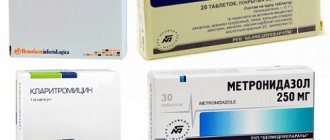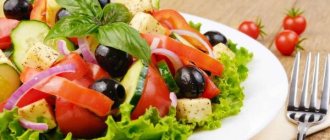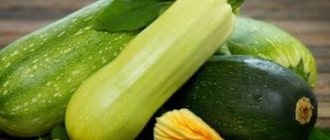Porridges for gastritis are the basis of therapeutic dietary tables No. 1 and No. 2, which are designed for diseases of the stomach with damaged mucous membrane. They are allowed to be used for different types and stages of the disease in a certain form. Recommendations also concern cooking methods and the degree of boiling. Healthy and prohibited cereals are listed based on the balance of gastric acidity.
The beneficial qualities of porridge help digestion, spare the inflamed walls of the stomach, relieve inflammation, and restore digestive function.
At the same time, the abundance of coarse dietary fiber in some cereals makes them unacceptable in the acute phase - such cereals are more likely to cause harm, irritate inflamed tissues, and aggravate the painful condition.
Porridges for gastritis are the basis of dietary nutrition, speed up the healing process, and help normalize the functioning of the gastrointestinal tract. Porridge is prescribed by specialists for low and high acidity, but the diet has slight differences. Each cereal affects the body in its own way, so it is recommended not to stop at just one cereal; you should alternate dishes throughout the week, guided by how you feel.
Beneficial properties of cereals for gastritis
The stomach accepts a lump of chewed food processed by saliva enzymes. Active secretion of gastric juice begins, which includes mucus, pectin, hydrochloric acid, and bicarbonates. Thanks to digestive juices, the lump swells, splits, and undergoes hydrolysis. Next, the contents move into the duodenum.
For digestion to proceed normally, the gastric mucosa must clearly perform biological functions: secretion of all juice components, peristalsis, breakdown of food components. If even one link fails, the process of digestion and absorption is disrupted.
The inflamed membrane with gastritis needs a gentle regime - thermal, mechanical, chemical, and our body needs a full supply of nutrients, vitamins, microelements. Porridge will help saturate the body with the necessary elements during gastritis.
It’s not for nothing that porridge is called a cure for gastritis - its enveloping properties protect the shell and reduce the aggressive effects of hydrochloric acid. The ability to quickly swell, break down and digest allows porridges not to irritate the stomach and reduce internal pressure and pain.
The rich composition of cereal porridges with useful elements covers the basic needs of the body and supplies it with:
- slow-release carbohydrates;
- vitamins;
- fiber;
- microelements;
- vegetable protein;
- vegetable fats.
A person, having eaten porridge with gastritis, does not feel heaviness, fullness, and is easily and for a long time satiated.
Rice cereal
This product will certainly be of interest to those who are trying to figure out what porridges for gastritis can be included in their diet. It has strengthening, soothing and enveloping properties. This means it has a beneficial effect on the digestive tract. Rice creates a protective film on the inner walls of the stomach and protects irritated tissues from further development of inflammatory processes.
Thanks to the high concentration of complex carbohydrates, this porridge saturates the body with vital energy for a long time. In addition, it serves as an excellent source of useful vitamins and microelements. Also, do not forget about the unique ability of rice to adsorb and remove harmful substances.
The effect of cereals on the body
Proper dietary nutrition is the key to a quick recovery and an effective method of preventing exacerbations. Cereals enrich the body with fiber, beneficial microelements and vitamins. But thanks to their unique chemical composition, each of them has its own mechanism of action.
Beneficial properties of the dish for the stomach
Cereals improve the digestion process and promote proper intestinal function. Useful properties of cereals:
- saturates well without a feeling of heaviness in the epigastric region;
- contain vitamins and minerals in large quantities;
- high concentration of fiber, amino acids;
- source of plant proteins.
Cereal dishes have astringent properties. They envelop the stomach, protecting it from damage caused by gastritis.
Corn grits
This is another example of a very useful porridge for gastritis. It has a fairly high content of fiber, vitamins and minerals. Therefore, it is recommended to periodically include it in the diet of people who have problems with the digestive system. Thanks to its unique properties, corn grits help normalize metabolism and restore the gastric mucosa.
You need to cook it in water, and if the remission is long, you can add a little milk and butter at the end. Too thick porridge can be processed using a blender until a more liquid and viscous mass is obtained. Before use, the finished dish must be brought to room temperature.
What porridges are indicated for different stages of gastritis
The benefits and harms of porridge for gastritis at different stages of the disease depend on how and from what grain the dish is prepared. Gastritis can be acute, aggravated, in the phase of attenuation of painful manifestations (remission).
Diet for gastritis is an integral part of therapy; it is prescribed by a gastroenterologist when drawing up a treatment regimen.
Be sure to follow your doctor's instructions, otherwise the condition may worsen.
Porridge in the acute period of illness
For the acute phase of gastritis, therapeutic diet No. 1A is suitable, prescribing only mucous cereal soups and warm liquid porridges, from days 2 to 4 of treatment.
To do this, boil it thoroughly in a large amount of water:
- semolina;
- oatmeal (cereals);
- round rice;
- chopped rice;
- cereal flour (oatmeal, rice flour).
It is allowed to season the finished dish with milk, butter, cream, milk and egg filling. Salt is limited to a minimum of 8 grams per day. Food is divided into 6 fractional meals, of which only 2 are porridge and soup.
Porridge after exacerbation of gastritis (subacute period)
When a sharp exacerbation subsides, a gradual transition to good nutrition is necessary. For adaptation during the period of attenuation of aggravated gastritis, table No. 1B or No. 1 was developed. You can switch to it as soon as relief comes or the doctor allows it. The diet is supplemented with milk soups from small cereals, liquid or semi-liquid milk porridges in a ground state.
Boil for a long time in water or half and half with milk:
- Semolina;
- Buckwheat;
- Oatmeal;
- Rice;
- Rice or buckwheat;
- Vermicelli;
- Buckwheat, oatmeal, rice flour.
The proportion of salt has been increased to 10 grams per day. Cooked cereals should be eaten warm and fresh. It is better to include porridge for breakfast or dinner, soup for lunch.
Cereal dishes are seasoned with a milk-egg mixture, milk, non-acidic fresh cottage cheese, cream, butter, honey, and sugar.
Porridge for gastritis in remission
With chronic gastritis in the attenuation stage, digestion gradually normalizes. The purpose of the diet during this period is to prevent new exacerbations and not to irritate the stomach with aggressive food (spicy, pickled, difficult to digest).
If you adhere to treatment table No. 2, you can remove most of the unpleasant symptoms of gastritis.
The diet according to diet No. 2 is considered a complete diet and can be followed for a long time. Cereal soups with vegetable, low-fat fish and meat, mushroom, and milk broth are allowed, as well as boiled and crumbly porridges. Dishes should be eaten warm, fresh; the daily intake of cereal is unlimited, but it should be boiled until soft or ground.
What cereals and porridges are allowed for gastritis in the remission phase:
- Buckwheat;
- Oatmeal;
- Manna;
- Rice;
- Corn (limited);
- Wheat;
- Barley (limited);
- Noodles and vermicelli.
The dressing for dishes cooked with cereals is varied. These are sour cream, milk, cream, natural yogurt, mild cheese, milk sauce, butter, cottage cheese, pieces of peeled sweet fruit, honey, sugar. With your doctor's permission, you can add jam, preserves, and fruit puree to porridge.
Legumes, pearl barley and millet are excluded. Regarding corn and barley, it is better to ask a doctor for advice.
Porridge for patients with gastritis with high acidity
When the acidity level exceeds the norm, the diet is adjusted so as not to provoke excessive acid secretion. Damaged stomach walls are too sensitive - the aggressive effect of acid provokes inflammation, adds discomfort, and leads to digestive failure.
The choice of porridge for gastritis with high acidity, regardless of the stage of the disease, should be approached responsibly. Some cereals can increase the release of excess acid, provoke painful heartburn, lead to unpleasant sensations, and worsen the disease.
Gastroenterologists and nutritionists agree that cereals are unacceptable for gastritis with a high level of acidity:
- Millet;
- Pearl barley;
- Corn;
- Barley;
- Beans.
It is not recommended to season with fermented milk products, except for non-acidic cottage cheese, sour cream, sour or coarse fruits, and dried fruits.
Milk, butter, milk-egg filling, soft, non-acidic and mild cheeses are allowed. The consumption of honey, salt and sugar is agreed with the doctor, as it depends on concomitant diseases.
Porridges for those suffering from gastritis with low acidity
In case of insufficient acidity, medical recommendations have similarly been developed on what cereals can be eaten with gastritis with a low acidity level.
Not all cereals are suitable for patients with this type of pathology - some lower the already low level of acid, which leads to insufficient breakdown of food. The lump stagnates, gastric pressure increases. The result is heaviness, pain, distension, fermentation, flatulence, bowel dysfunction, poor absorption of fats, proteins, vitamins, microelements, and other nutrients.
The goal of the diet for hypoacid gastritis is to maximally stimulate the secretion of gastric juice and the secretion of hydrochloric acid, while sparing the mucous membrane. For people with low acidity, it is better to exclude certain types of cereals in the acute phase or limit them during the relief period:
- Coarse grind;
- Whole grains;
- Undercooked;
- Steamed.
Barley, oat cereals (replaced with flakes), wheat with bran, large pasta, beans, and beans are limited.
Is it possible to eat porridge?
Cereals for gastritis take pride of place in the dietary menu. They have the following properties:
- They contain many microelements (iron, zinc) and vitamins (vitamin A and K in large quantities).
- Prevents seasonal exacerbations.
- They dull pain in the stomach and actively fight discomfort, bloating and colic in the abdomen.
- Saturate the body with proteins of plant origin.
- Heal damaged walls and gastric mucosa.
- Provide the body with a long-term supply of energy.
Cereals are prepared in water or milk with a low fat content.
Porridge recipes are very simple, but before preparing the dishes, you should familiarize yourself with some rules:
- You need to cook it in water or milk diluted 50 percent with water.
- The consistency of the cooked dish should be viscous, reminiscent of thick sour cream (this can be achieved using a blender).
- You can put cream and butter in the dish, but do not overuse it.
- Synthetic seasonings, hot spices (chili peppers, paprika), and vinegar should not be added to food.
Return to contents
Cereals
Oatmeal is one of the easiest to prepare and affordable. This dish satisfies the feeling of hunger, improves digestion, prevents constipation and diarrhea, cleanses the body's cells of toxins, and protects the gastric mucosa from bacteria. Oatmeal contains the following ingredients:
- calcium;
- iron;
- potassium;
- magnesium;
- iodine;
- fluorine;
- phosphorus;
- vitamins A, E, B (B1, B2, B9), K.
Whole grain oatmeal contains all the nutrients.
You need to be careful when choosing oatmeal. Cereals must be of high quality, from the highest grades of whole grains. Boil the oatmeal in water in a saucepan or slow cooker for about 25 minutes. You cannot cook with milk. So that it is not completely lean, you can add butter, sugar or salt, honey, allowed fruits and berries to taste. It is not recommended to use raisins, dried apricots, and walnuts as additives. Boiled oat muesli for gastritis should be consumed warm.
Rice cereal
Rice porridge for gastritis is an indispensable component of the diet. This is a light and dietary dish. Rice contains carbohydrates that saturate the body with energy for a long time. It has vitamins PP, B and E and microelements (zinc, iron, phosphorus). To prepare this dish you will need round-green rice. It is boiled in water (in proportions 1:2) for about 15-20 minutes. To improve the taste of the dish, you can add butter, salt and some kind of meat.
Buckwheat porridge
Buckwheat is one of the best food products. It can be eaten for gastritis with high acidity and stomach ulcers. This food has the following properties:
- Soothes irritated mucous membranes of the stomach.
- Due to its high iron content, it stabilizes the level of hemoglobin in the blood.
- Contains many vitamins (B, P, E, C) and microelements (potassium, copper, iodine, phosphorus, zinc and many others).
- Rich in protein, which is well absorbed by the human body.
- Significantly increases the level of resistance to stress.
In addition, buckwheat is a universal side dish. It goes well with meat, fish and vegetables.
Semolina
Semolina is made from wheat. It is very easy and quick to prepare - about 7-10 minutes. You can add butter, salt, sugar, pieces of fruit and berries to the dish. Semolina porridge is often used for gastritis. But you should not eat it in large quantities, as this leads to rapid weight gain. Manna contains a large percentage of carbohydrates, which are well absorbed by the stomach of a person suffering from gastritis.
Millet porridge
Whether you can eat millet with gastritis depends on the acidity. If it is elevated, then such a product should be excluded from your menu. If it is low, you can safely eat, but in small quantities, since it contains a large percentage of iron, which negatively affects the gastric mucosa. To double the benefits of a millet meal, the product can be mixed with pumpkin. Millet porridge for gastritis will have a positive effect on the general condition of the whole body.
Corn
For gastrointestinal diseases, very finely ground cereals are used. If you don’t have what you need in stores, you can grind it yourself in a coffee grinder or blender. Corn porridge generally has a positive effect on the general condition of the patient. Gastritis sufferers are recommended to eat this dish no more than once a week, since the stomach has a hard time digesting it. Corn porridge contains:
Hercules
Hercules porridge is processed oat flakes. Such dietary muesli can be included in the diet menu. For gastritis, Hercules restores damaged mucous membranes and eliminates pain, since oats contain gluten. Such food can normalize glucose and blood sugar levels. You should not overuse rolled oats, since muesli is quite large and hard and difficult to digest. You can add honey, sugar, fruits and berries to the dish.
Lentil
Lentils for gastritis can be included in your diet. This product contains iron and potassium. Helps normalize digestion, improves urination, strengthens the cardiovascular system and immunity, strengthens bones. You can eat lentils for gastritis, but if the acidity is high, then it is better to avoid lentils or take small portions 1-2 times a month. This is due to the fact that porridge overloads the gastrointestinal tract.
Flaxseed porridge
Porridge is prepared from seeds. This dish is much healthier than regular buckwheat or oatmeal. It contains vitamins A, B and C, iron, zinc, boron, chromium, potassium. The seeds of this culture improve the functionality of the endocrine, cardiovascular, and immune systems. Flaxseed porridge is used as a cancer prevention. To prepare, you will need 4 tablespoons of flaxseed flour and half a glass of milk. Cook the dish for approximately 7-9 minutes. You can add salt or sugar to taste.
Is it possible to have barley?
Pearl barley porridge is made from barley, which has the following properties:
- Contains a lot of fiber, which cleanses the body of toxins.
- Effectively eliminates diarrhea.
- It contains polysaccharides that normalize cholesterol levels.
- Renews damaged gastric mucosa.
- Contains provitamin A, which supports a good immune system.
Return to contents
Wheat
Wheat porridge, as well as barley porridge, should not be eaten during seasonal exacerbation of gastritis. The dish is prepared from a very fine grind (if you can’t find one, you can grind it in a coffee grinder or blender). The dish can be eaten by everyone except children under 6 years of age and pregnant women. Wheat porridge for gastritis restores the lining of the stomach after illness.
Which ones can you eat?
One of its main components is the “correct” porridge. For gastritis, such a dish should become the main food, since it has an astringent effect, is rich in proteins, vitamins, and also contains iron and other trace elements. It should be noted that this disease can be expressed in various forms, and the stages of the disease are also different. The healthiest cereals are:
- Oatmeal. Has an analgesic effect.
- Buckwheat. Actively fights stress.
- Millet. Eliminates dysbacteriosis, normalizes stool.
- Manna. Suitable for the prevention of malignant tumors in the intestines.
- Rice. Rice is sometimes called a “pill for gastritis” because (like oatmeal) it has an enveloping effect.
- Linen. With its help you can quickly empty your intestines.
Semolina
Made from wheat, contains a large amount of zinc and iron. These microelements normalize the level of hydrochloric acid, so it is recommended to eat porridge for any form of gastritis. The finished dish is soft, does not burden the stomach, is easily digested, and increases energy reserves. It is allowed to cook in water, milk, add butter. This is one of the first dishes that you are allowed to eat after surgery on the stomach and other digestive organs.
Semolina porridge is included in diets for erosive forms and stomach ulcers. In case of hypoacid gastritis, it accelerates the restoration of the mucous membrane. It works well as a symptomatic remedy for spasmodic stomach pain, and with constant use it has an anxiolytic effect (removes stress and feelings of fear).
Semolina porridge is recommended for pregnant women in the absence of allergic reactions (rare).
Not indicated for young children due to the content of a specific mucopolysaccharide - gliodin. This component impairs the absorption of food by the intestinal villi. Semolina interferes with the absorption of vitamin D in children under 3 years of age, which can lead to the formation of rickets.
Constant consumption of semolina porridge can lead to weight gain.
Semolina is cooked at the rate of 300 mg of cereal per 1 liter of liquid (water, milk). Bring the liquid to a boil, add the cereal, cook for 1-2 minutes, stirring, remove from heat, cover with a lid. The porridge is infused for 20 minutes until it swells.
Millet
Cereals contain a large amount of useful minerals and amino acids. Improves digestion, stimulates the production of gastric juice. Cereals are boiled in water and milk. The consistency should remain liquid. For gastritis with low acidity at the acute stage, it is recommended to initially grind the cereal in a blender. Due to the increased amount of fiber, stool thins, so it is not recommended for diarrhea. Experts recommend consuming millet after several days of active therapy with other cereals.
Rice
One of the main porridges with high acidity. The mucus that forms during the cooking process is especially useful. In the acute form, you should use the decoction several times a day to reduce hydrochloric acid until your health returns to normal. Rice porridge is prepared with milk and water. The cereal should be well cooked and the dish should remain liquid. If necessary, the grains can initially be ground in a blender.
A distinctive property of rice porridge for gastritis is its pronounced ability to absorb and eliminate toxins. Rice porridge can be used even in cases of serious poisoning as a sorbent (if you don’t have activated carbon on hand, for example).
This dish is indicated for nursing mothers and pregnant women, because... reduces intoxication during gastritis, and also reduces the manifestation of inflammatory reactions.
Rice porridge is safe for children and can be given with first foods. Widely used as a dietary dish for all age groups.
For porridge, take round rice, rinse and pour into cold water. Bring to a boil and cook for 10 minutes. After this, the rice can be cooked with milk and other ingredients. It is better not to boil rice in milk right away - the grains do not boil well.
Barley
Has a high enveloping ability. It acts like medicines - antacids. Prevents irritation of the mucous membrane, promotes digestion, normalizes acidity levels. Experts recommend eating barley porridge 20 minutes before eating another dish, as a medicine. When ready, the porridge should have a soft, liquid consistency.
Buckwheat
One of the most active cereals. The effect of the dish can be noticed almost immediately. Buckwheat porridge contains a huge amount of amino acids and fiber. Due to this, it increases energy reserves, has a general strengthening effect, facilitates digestion, and eliminates constipation. It has the ability to both reduce acidity and increase it.
- reduces stress levels. For this reason, dishes with buckwheat porridge can be recommended during the period of remission;
- accelerates the restoration of mucous membranes, restores low hemoglobin (contains iron);
- is a preventative against ulcer complications - stomach cancer.
Buckwheat is rich in fiber, which does not allow it to be recommended in the acute phase of the inflammatory process.
It is hypoallergenic, i.e. It can be used by pregnant and lactating women, as well as children. To restore the body after an illness, buckwheat porridge with milk is used.
Buckwheat is poured into a thick-walled pan (can be a cauldron or a duck pot) on the basis that out of 100 gr. cereals will be 300 gr. porridge. Do not stir the buckwheat before cooking. It is good to wrap the already cooked porridge in a saucepan in a blanket for 20-30 minutes.
Wheat porridge
It is recommended to use for chronic gastritis in remission. Porridge increases energy reserves, strengthens the body, and improves overall well-being. Quickly puts patients back on their feet after surgery. Wheat cereals should be boiled until soft and eaten no more than 3 times a week.
Corn
An extremely nutritious porridge, good for digestion, but only in remission. During an exacerbation of the disease, it is prohibited to consume cereals. Corn porridge should be prepared using water or milk, adding butter. The mass should remain liquid.
Oatmeal, rolled oatmeal
Porridge removes toxins, coats the walls of the stomach, normalizes stool, eliminates nausea, relieves pain, and alleviates the patient’s condition with any form of gastritis. In the acute stage, liquid oatmeal with milk is especially useful. The universal product can be consumed at low and high acidity. However, the therapeutic properties can be increased with additional ingredients. If the acidity is low, honey and nuts are added; if the acidity is high, dried fruits are added.
Dietary nutrition gives good results if the diet is prepared correctly. If necessary, you should seek advice from a nutritionist or other specialist.
It is distinguished by the following properties:
- a pronounced astringent effect that reduces pain during relapse of gastritis and prevents the onset of the disease itself (preventive effect);
- the product is rich in vitamins A, B126, PP, K, A, E. Contains iron, phosphorus, magnesium, iodine, sulfur, calcium and other micro and macroelements;
- perfectly satisfies hunger, which is especially important for hyperacid gastritis, contains sufficient proteins and lipids;
- is an antidepressant, i.e. prevents exacerbation of the process under stress;
- eliminates constipation, normalizes intestinal motility;
- oatmeal promotes mucosal regeneration and contains many antioxidants;
- goes well with any food as a side dish.
For the treatment of gastritis, compressed oatmeal is better suited. Pour a glass of porridge into cold water (2 liters), bring to a boil and after 2-3 minutes turn off, leave for 20 minutes. This allows you to achieve the optimal consistency for gastritis and retain a sufficient amount of nutrients. Adding a small amount of low-fat (and non-sour) cottage cheese makes this dish ideal from a nutritional point of view.
Video on the topic: Oatmeal, sir!
Who is contraindicated in oatmeal?
In order for oatmeal to be beneficial, the dish is boiled in water. This rule especially applies to patients diagnosed with acute gastritis. With this pathology, milk is welcome, but not all patients tolerate it. This means that milk or low-fat yogurt is added to the dish after cooking.
How to choose oatmeal
Cereals should be made from whole grains or high-quality flakes. The flakes are cooked for a quarter of an hour. Before preparing the dish, it is important to consider the rules:
- The porridge is cooked to a liquid consistency.
- The dish is consumed warm.
- It is better not to add salt to oatmeal. After cooking, you can add fresh oil.
- The dish is cooked in water.
- Oatmeal and rice porridge can be consumed as dessert. Add honey and dates. Raisins or dried apricots will add flavor; raisins can only be added to the dish if the acidity is low. Before adding dried fruits to the porridge, they are soaked in water. Add dried fruits a few minutes before the dish is ready.
- Fresh apples, raspberries, and currants are added to the dish at zero acidity. For gastritis with high acidity, it is better to avoid the supplement. Before adding fruits to a dish, it is recommended to bake them in the oven or steam them. The note applies to peaches, apples, and strawberries. It is better to forget about plums and pears for stomach diseases: fruits are difficult to digest.
- It is also advisable not to consume store-bought candied fruits, since the products contain sugar and acids.
- It is not recommended to combine porridge with nuts; the kernels are difficult to digest.
- Dried figs have seeds that are difficult for the stomach to handle. It is better to refuse dried fruit.
Analysis "bit by bit"
The basis for choosing cereals for preparing porridge is always the family’s food preferences. It also matters how long it takes to prepare a healthy breakfast. Here , the honored leaders are “Hercules” and semolina - a couple of minutes in the kitchen - the dish is ready.
Some go even further - they buy semi-finished porridges that do not require cooking. We do not recommend doing this. The beneficial substances of the semi-finished product remain where it was prepared, and for breakfast you only get extra calories and no benefits.
Therefore, review your morning routine and prepare breakfast correctly. Even if this requires getting up half an hour earlier. To convince you completely, let’s look at the porridge “bit by bit.”
Oatmeal, Hercules, muesli
It has enveloping properties and sufficient calorie content. After oatmeal for breakfast, you will feel full for a long time, and you will not have stomach pain. In addition, oatmeal for gastritis promotes the regeneration of inflamed mucous membranes and heals minor erosions and ulcers. In addition, there are many recipes for treating gastritis using oatmeal broth and oatmeal jelly. Don't neglect this information.
The new-fashioned muesli product is prepared on the basis of oatmeal, with the addition of candied fruits, nuts, raisins and dried fruits. Muesli is not contraindicated for gastritis, but you should not consume it in dry form or in the form of pressed bars. The correct option is muesli covered with milk for an afternoon snack.
Bran
An interesting and useful product from the point of view of nutritionists.
Bran porridge is a strong word; you don’t need to cook it. By pouring ready-made bran with milk, water or broth, you get a dish similar to porridge in consistency, but not at all in properties. The main task of bran is to cleanse our body and normalize peristalsis. In their pure form, they are not digestible, they pass through the digestive tract in “transit” and are excreted, collecting all the waste, toxins, and harmful substances.
Bran is very useful for indigestion - it helps to cope with constipation and diarrhea. They are a must in the diet of people who are losing weight, because they do not add calories and fill you up well.
For gastritis, bran can be consumed, but not more than 2-3 times a week , preferably in the afternoon. Bran with milk or kefir as an afternoon snack is an excellent solution.
Buckwheat
The nutritional value of buckwheat is so high that nutritionists call it the queen of cereals. It is the “royal” breakfast that should become the main one in the choice of cereals. Buckwheat is perfectly digestible, contains a huge amount of useful substances, regulates glucose levels, strengthens the immune system, and protects the mucous membrane. Prepare viscous porridge with water or broth as a side dish, and for breakfast, use buckwheat in milk with fruit additives. The body will be grateful to you.
Rice
In terms of nutritional value, rice is much inferior to buckwheat; there is an opinion among nutritionists that refined rice grains contain nothing but starchy compounds.
However, for problems with the intestines, for acute gastritis, rice water becomes a medicine. It is the viscous starchy structure of rice broth that helps relieve inflammation and diarrhea and protects the mucous membrane during subsequent meals.
When gastritis is in remission, give preference to unrefined varieties of rice - brown, red and others. All valuable microelements and vitamins are contained in the cereal shell, which is absent in white rice.
Semolina
Convenient, quick to prepare product. Guryev porridge with honey and fruit is prepared using semolina. For gastritis, semolina is not contraindicated, but you should not abuse it. Semolina is too high in calories and contributes to excess weight gain. The harmful qualities of semolina include its ability to destroy calcium in the body.
So cook semolina when you desperately lack time to cook another, healthier porridge.
Linen
A lot has been written about the benefits of flax seed.
This is an excellent remedy for the treatment of kidney diseases, blood pressure, and hypercholesterolemia. Flax is able to remove toxins and radionuclides, improves the condition of hair and skin, and strengthens the immune system. For gastritis, flaxseed porridge made from grains ground into flour is allowed, but during a period of remission. Due to the large amount of fiber, flax is not included in the diet during exacerbations and gastritis with high acidity.
Cooking features
Cereal dishes are recommended to be consumed heavily boiled. Once ready, cover them with a lid and leave on the stove for 15 minutes. Each grain has a certain cooking time, which depends on the method of processing and grinding of the grain. Typically, the manufacturer indicates on the packaging the recipe that is optimal for a specific variety and type of product.
Crumbly porridge is not suitable for patients with gastritis. The cereal is poured with enough water to make the dish liquid. This treatment will retain astringent properties, useful for the wounded mucosa.
Cereals can be cooked in milk if gastritis is not associated with low or zero stomach acidity. A person suffering from these forms of the disease is often diagnosed with intolerance to dairy products, which manifests itself in the form of intestinal disorders or dermatitis.
For gastritis with high acidity, cereals prepared with milk help neutralize excess hydrochloric acid, relieve heartburn, and eliminate belching.
The cereal is boiled in water. After swelling, milk is added to it. This cooking option preserves the beneficial properties of the products. Cereals cook better.
For stomach pain, cereals are cooked in water, without adding sugar or milk. They are pre-ground with a coffee grinder or blender. Porridge is eaten exclusively warm. Cold and overly hot dishes injure the gastric mucosa.
Rules for preparing porridge for gastritis:
- insist before use;
- for the hypoacid form of the disease, cereals are boiled in water;
- sugar is added in moderation, no more than 1 tablespoon per 300 g of porridge;
- achieve a liquid consistency;
- well boiled.
Add butter or vegetable oil to the dish. The product is generally well tolerated during remission. The oil improves intestinal motility and promotes the regeneration of mucosal cells. During exacerbations of gastrointestinal diseases, cereals are boiled in water, without adding sugar.
How to cook and eat porridges that are healthy for the stomach
For those suffering from stomach pathologies, nutritionists have developed certain rules for preparing cereals, preparing and eating porridges for gastritis. They are necessary to protect the gastric walls, affected by inflammation, from contact with digestive juices at the moment of their greatest release.
- Preparation: cereals, except semolina, are washed, grains without shell are crushed or ground;
- Preparation of porridge: the cereal is poured into cold water or half and half water with milk, the ratio is 1 to 4, brought to a boil, then cooked under low heat until soft, salted, seasoned to taste;
- Preparation of soup: washed cereals are poured into a boiling broth or low-fat light broth, cooked until soft;
- Usage: the dish is served freshly prepared, warm, in a small portion.
It is important to achieve a slimy consistency - this is the main value of porridge for gastritis. The lining of the stomach is softly enveloped, the food bolus is easily split and quickly evacuated into the intestines.
The benefits of millet cereals
This is one of the most useful porridges for gastritis with low acidity. It helps relieve inflammation and pain. Since millet cereal is rich in fiber, it helps normalize intestinal function and prevents the development of dysbiosis.
You can cook this porridge not only with water, but also with milk. To do this, pour a glass of cereal with two cups of salted liquid and put it on the stove. As soon as the water or milk boils, you need to reduce the heat and wait until the porridge is completely boiled. Season the finished dish with a small piece of butter, cool slightly and serve.
What cereals should you not eat during gastritis?
The cereals from which cereals are made contain valuable substances - fiber, vegetable fats, carbohydrates, protein, many vitamins, minerals, microelements. With minimal heat treatment they are preserved best. But with gastritis, it is necessary to sacrifice nutritional value for the sake of benefits for the diseased organ.
Popular steamed porridges are not suitable. For example, buckwheat or millet for gastritis, which they usually like to brew and eat crumbly, on the contrary, you need to boil them, make them liquid or semi-liquid, viscous. Otherwise, undercooked grains will irritate the stomach, take a long time to digest, and cause gas formation and fermentation.
It is better to limit grains that are ground with a coarse shell. This applies to wheat porridge for gastritis, whole oatmeal. Hard fibers have a negative effect on damaged mucous membranes and are difficult to process by digestive enzymes.
You should also avoid whole grain cereals, except round rice and buckwheat, barley, flaxseeds, brown rice, and beans. They are difficult to boil to the optimal consistency; the shell of the cereal can damage the mucous tissue of the stomach walls, which suffers from gastritis.
A few words about the benefits of cereals
Any specialist will say that complete relief from gastritis is impossible without following a special diet that completely excludes a number of certain foods. To reduce the frequency of relapses of this disease, it is recommended to include cereals in the diet of patients. Most ready-made cereals have enveloping properties and help prevent further irritation of the inner walls of the stomach.
Due to the pronounced astringent effect, it is possible to minimize pain symptoms and prevent the disease from becoming chronic. Those who are trying to understand whether it is possible to eat porridge with gastritis will be interested in the fact that the vitamins and microelements they contain accelerate the process of tissue regeneration.
Forbidden cereals
Not all cereals are equally useful for gastritis. But this statement is true if you prepare the dish incorrectly or do not pay attention to the stage of the disease. For example, during an exacerbation period, millet porridge, wheat, corn, and barley are prohibited. At this time, it is better to eat oatmeal, buckwheat, rice, and semolina.
For a long time, pearl barley was prohibited for gastritis, primarily due to the large size of the grains, which slowed down digestion. However, it later turned out that pearl barley can increase acidity, so it is recommended for gastritis with a low content of hydrochloric acid. In addition, before preparing the grain, it is recommended to initially grind it in a blender.
There are no prohibited cereals as such. You just need to cook and eat correctly. Portions should be small, the consistency of the dish should be liquid. Other ingredients can be added to increase effectiveness.
Oat groats
This porridge is not only not contraindicated, but is also recommended for gastritis and other diseases of the digestive system. It contains a whole range of useful vitamins and minerals. When oatmeal enters the stomach, it envelops its inner walls, protecting them from the irritating effects of hydrochloric acid. It has anti-inflammatory and regulatory properties. With regular consumption of this porridge, the patient’s complaints about flatulence, cramps and stomach discomfort disappear.
In addition, oatmeal contains a large amount of fiber, which helps normalize intestinal function. This substance has cleansing properties, especially important for problems with the digestive system.
To prepare oatmeal, it is advisable to use whole grains. It has a great healing effect and contains a whole range of useful vitamins and microelements. You can add homemade yogurt or butter to the porridge. Also, the diet of people suffering from gastritis can include dishes made with oatmeal. But they should be boiled so as to obtain a liquid jelly-like mass.
Healthy, delicious recipes
The porridge diet is used for any gastrointestinal disease. Recipes for patients with gastritis, ulcers, and pancreatitis are no different. The only thing you need to take into account is the stage of the disease - exacerbation or remission. What cereals to use in this or that case were described above. Below are delicious recipes that will help you achieve a speedy recovery.
Millet porridge
A useful dish during the period of remission, as well as after the disappearance of unpleasant symptoms after 2-3 days of active therapy. Porridge helps to gain strength, improve overall well-being, and remove toxins.
Ingredients for cooking:
- Millet cereal – 150 g;
- Milk – 300 ml;
- Vanillin;
- Egg – 1 pc.;
- Cream – 3 spoons;
- Banana;
- Nuts.
Pour milk into a saucepan, add vanillin and salt, and place on the stove. After boiling, add the cereal and cook until tender. Separately, beat the whites into a foam, add the yolk, cream, and chopped banana. Add to cooled porridge. Grease a baking dish with butter, lay out the mixture, and cover the top with foil. Bake for 30 minutes in the oven at 180 degrees. You can add a little sugar, honey, sprinkle with chopped nuts. You can make rice porridge using this recipe. And instead of banana, they add dried fruits - raisins, dried apricots.
Semolina in chicken broth
If you are tired of sweet milk porridge, you can prepare a delicious nutritious breakfast using chicken broth.
Ingredients:
- Semolina – 2 tbsp. spoons;
- Chicken broth - 1.5 cups;
- Boiled chicken breast – 200 g;
- Butter – 30 g;
- Turmeric, salt, herbs.
Initially, you should prepare chicken broth. To do this, add water to the chicken and cook until done. The chicken is shredded. Add 300 ml of prepared broth to the saucepan, add meat, salt, and turmeric. After boiling, add semolina. Cook, stirring constantly, for 2 minutes. Add chopped herbs and butter.
Rice pudding
This traditional British delicacy is ideal as a dietary supplement for gastritis.
Ingredients:
- Rice – ¾ cup;
- Milk – 2.5 cups;
- Coconut milk – 400 ml;
- Vanillin;
- Sugar;
- Salt;
- Raisin;
- Coconut flakes.
Cooking options
For gastritis, it is better to consume buckwheat in the form of crumbly, liquid or viscous porridge with water or milk. You can add butter, a little sugar, dried fruits to it. The crumbly version is a complete side dish for boiled fish and steamed cutlets. But you shouldn’t use it too often, giving up other cereals. It is important to keep your diet varied.
If you are sorely short of time, cook buckwheat in a slow cooker . We tell you how to do this:
- Rinse the cereal until clean, cut the onion into rings, and grate the carrots.
- Lightly grease the multicooker mold with vegetable oil, put buckwheat with cooked vegetables there, you can add pieces of lean meat, and add salt.
- Fill with water until it covers the contents and is about 2 fingers higher. Set the “Pilaf” or “Stew” mode (15-20 minutes). And as a result, you will get a tender, crumbly porridge with soft meat and aromatic vegetables.
The dish simply melts in your mouth. Due to the high pressure, the cereal quickly boils, but at the same time retains its nutritional value.
Important! If you add little water, the buckwheat will be tough. The main thing is not to make mistakes with the volume of liquid.
Kissel
From finely ground buckwheat flour you can prepare an enveloping and very healthy buckwheat jelly. We offer a step-by-step recipe:
- Grind the finished group in a coffee grinder.
- For 3 tablespoons, take 300 ml of water (boiling water).
- Gradually add buckwheat powder to boiling water, cook over low heat until tender, stirring constantly.
It is better to consume this jelly on an empty stomach, so that the product has an enveloping effect on the mucous membrane and prevents irritation during the day. Prepare new jelly every day.











